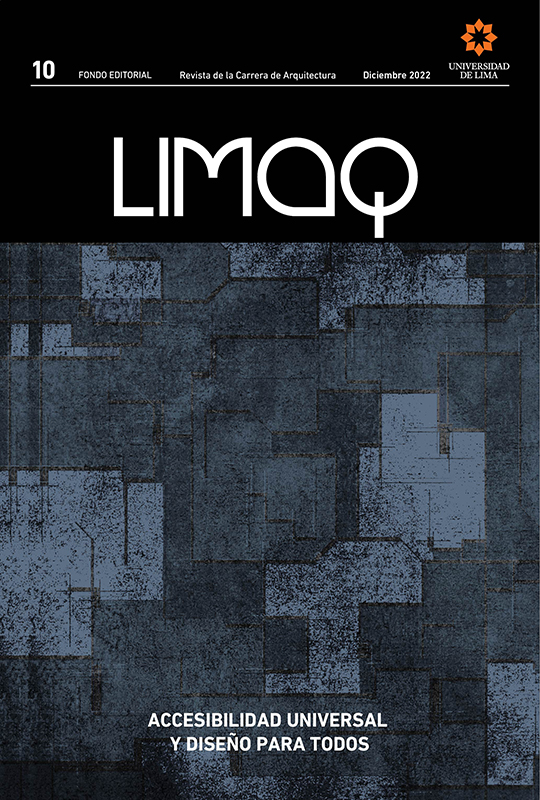Aprendizaje-servicio y la cultura maker. Desarrollo de material educativo para niños con parálisis cerebral y discapacidades cognitivas
DOI:
https://doi.org/10.26439/limaq2022.n010.5246Palabras clave:
aprendizaje-servicio, cultura maker, design thinking, práctica formativaResumen
Articular metodologías colaborativas, con participación comunitaria y enfoque experiencial, es una oportunidad para que los estudiantes se involucren en el diseño, realización y evaluación de proyectos de aprendizaje-servicio, aplicando conocimiento sobre la cultura y participando de esa manera en el llamado movimiento o cultura maker. Este artículo presenta una experiencia con estudiantes de ingeniería de una universidad del suroccidente colombiano que desarrollaron material didáctico para una institución educativa que trabaja con niños con parálisis cerebral y discapacidades cognitivas. El proyecto implicó la definición del problema con la comunidad de la escuela, el desarrollo de prototipos en el FabLab Cali —un laboratorio de fabricación digital— y su validación con el colectivo de maestros de la institución beneficiaria. El equipo de trabajo estuvo conformado por dos profesores de ingeniería, uno de diseño y otro de educación, el grupo de maestros de la institución beneficiaria y los estudiantes de ingeniería (veinte en total). Se entregaron a la institución beneficiaria cinco dispositivos didácticos asequibles y adaptables a las condiciones que plantearon el problema.
Descargas
Referencias
Abele, E., Metternich, J., Tisch, M., Chryssolouris, G., Sihn, W., ElMaraghy, H., & Ranz, F. (2015). Learning factories for research, education, and training. Procedia CiRp, 32, 1-6.
Batlle, R. (2018). Guía práctica de aprendizaje-servicio. Santillana Educación, S. L. https://roserbatlle.net/wp-content/uploads/2018/09/Guia-practica-ApS.pdf
Bell, L., Brown, A., Bull, G., Conly, K., Johnson, L., McAnear, A., & Sprague, D. (2010). A special editorial: educational implications of the digital fabrication revolution. TechTrends, 54(4), 2-5. doi:10.1007/s11528-010-0423-2)
Berg, D. R., Buchanan, E. A., & Lee, T. (2016). A methodology for exploring, documenting, and improving humanitarian service learning in the university. Journal of Humanitarian Engineering, 4(1).
Blikstein, P. (2018). Maker movement in education: History and prospects. Handbook of technology education, 419, 437.
Bosman, L., Chelberg, K., & Winn, R. (2017). How does service learning increase and sustain interest in engineering education for underrepresented pre-engineering college students? Journal of STEM Education: Innovations and Research, 18(2).
Burke, J. (2015). Making sense: can makerspaces work in academic libraries? ACRL Proceedings 2015 (pp. 497-504). http://www.ala.org/acrl/sites/ala.org.acrl/files/content/conferences/confsand preconfs/2015/Burke.pdf
Cohen, J. Jones, W. M., Smith, S., & Calandra, B. (2017). Makification: towards a framework for leveraging the maker movement in formal education. Journal of Educational Multimedia and Hypermedia, 26(3), 217-229.
Cross, N. (2014). Design thinking: understanding how designers think and work. Berg. Dougherty, D. (2012). The maker movement. Innovations: Technology, Governance, Globalization, 7(3), 11-14. doi:10.1162/INOV_a_00135
Duffy, J., Tsang, E., & Lord, S. (2000). Service-learning in engineering: what, why and how. 2000 Annual Conference. Expin Media Lab. (s. f.). https://expin.uao.edu.co/
FabLab Cali (s. f.). https://www.fablabcali.org
Fullan, M. G., & Langworthy, M. (2013). Towards a new end: new pedagogies for deep learning. Collaborative Impact.
García, C. (2016). (Casi) Todo por hacer. Una mirada social y educativa sobre los fab labs y el movimiento maker. Fundación Orange. http://www.fundacionorange.es/wpcontent/uploads/2016/05/Estudio_Fablabs_Casi_Todo_por_hacer.pdf
Gershenfeld, N. (2012). How to make almost anything: the digital fabrication revolution. Foreign Affairs, 91(6), 43-57. http://www.foreignaffairs.com/articles/138154/neil-gershenfeld/how-to-make-almostanything?page=show
Halverson, E., & Sheridan, K. (2014). The maker movement in education. Harvard Educational Review, 84(4), 495-505. doi:10.17763/haer.84.4.34j1g68140382063
Hatch, M. (2014). The maker movement manifesto: rules for innovation in the new world of crafters, hackers, and tinkerers. McGraw-Hill Education.
Martínez, S., & Stager, G. (2013). Invent to learn: making, tinkering, and engineering in the classroom. Constructing Modern Knowledge Press.
Naciones Unidas (s. f.). Objetivos de Desarrollo Sostenible. https://www.un.org/sustainabledevelopment/es/education/
Papert, S. (1991). Situating constructionism. En S. Papert & I. Harel (Eds.), Constructionism (pp. 1-11). Ablex.
Saavedra, L. (2019, septiembre). La filosofía maker como estrategia para el fortalecimiento de competencias transversales en ingeniería. Simposio “Encuentro Internacional de Educación en Ingeniería ACOFI 2019”.
Salem Press Encyclopedia (2021). Maker culture and society. https://ezproxy.uao.edu.co:2813/eds/detail/detail?vid=2&sid=7aaf106b-5c24-47a5-8b84-c09c3ebc8567%40sessionmgr4006&bdata=Jmxhbmc9ZXMmc2l0ZT1lZHMtbGl2ZQ%3d%3d#AN=148527086&db=ers
Sugru (s. f.). The Fixer Manifesto. https://sugru.com/our-mission#pm-36734
Torrone, B. (2006). The maker´s bill of rights. Make Magazin, 80. https://makezine.com/2006/12/01/the-maker’s-bill-of-rights/
Universidad Autónoma de Occidente (2015). Proyecto Educativo Institucional. Colección Documentos Institucionales.
Universidad Autónoma de Occidente (2021a). Misión, visión y perfil. https://www.uao.edu.co/informacion-institucional/mision-y-vision/
Universidad Autónoma de Occidente (2021b). Semillero Maker UAO. https://www.uao.edu.co/semillero-makeruao/
Vega, C., & Saavedra, L. (2018). Actividad complementaria, espacio formativo desescolarizado desde la perspectiva de aprendizaje basado en equipos. PBL 2018.
Vossoughi, S., & Bevan, B. (2014). Making and tinkering: a review of the literature. National Research Council Committee on Out of School Time STEM, 1-55. http://sites.nationalacademies.org/cs/groups/dbassesite/documents/webpage/dbasse_089888.pdf
World Economic Forum (2016, enero). The future of jobs: employment, skills and workforce strategy for the fourth industrial revolution. Global Challenge Insight Report, World Economic Forum. http://www3.weforum.org/docs/WEF_FOJ_Executive_Summary_Jobs.pdf



